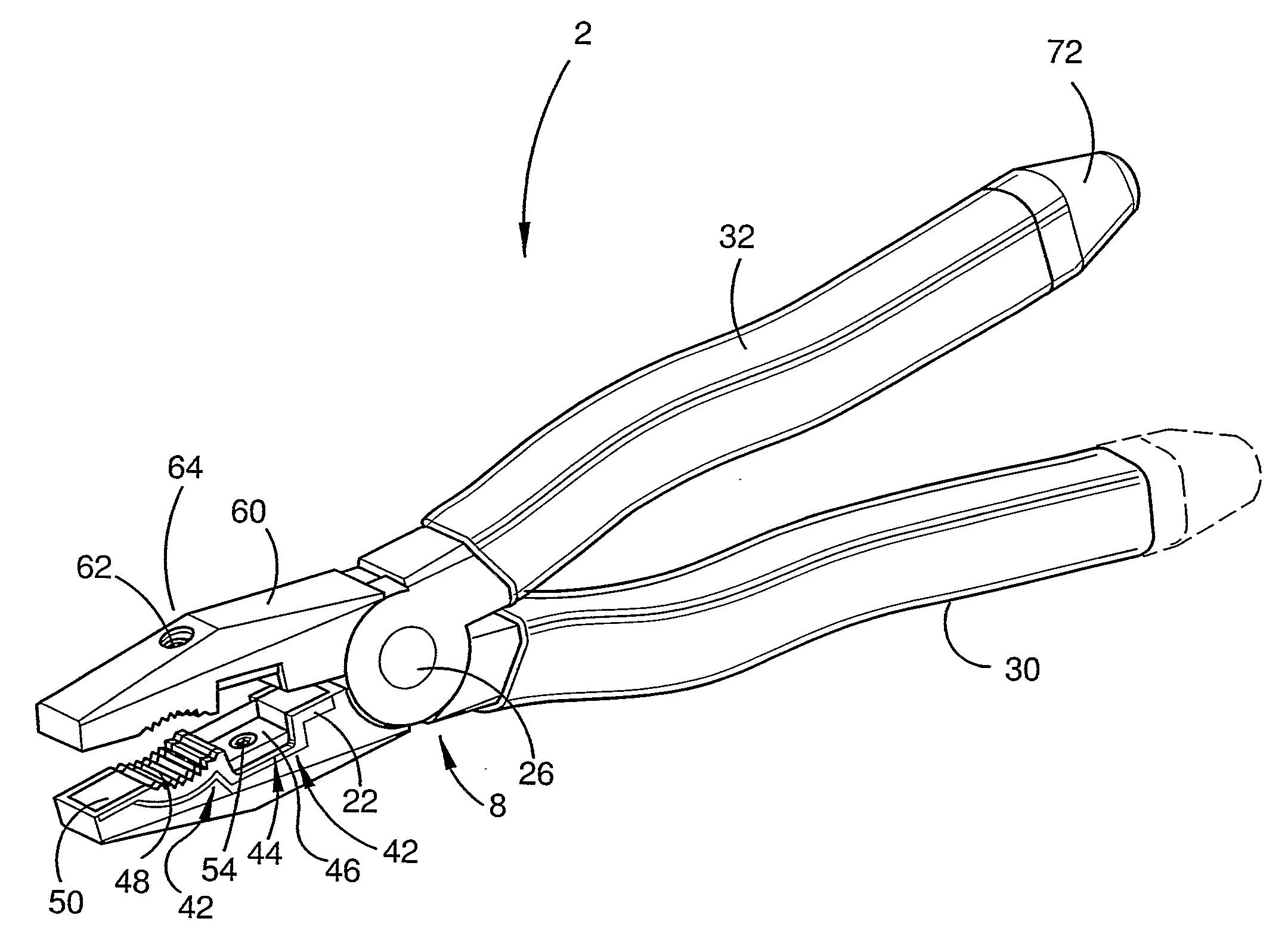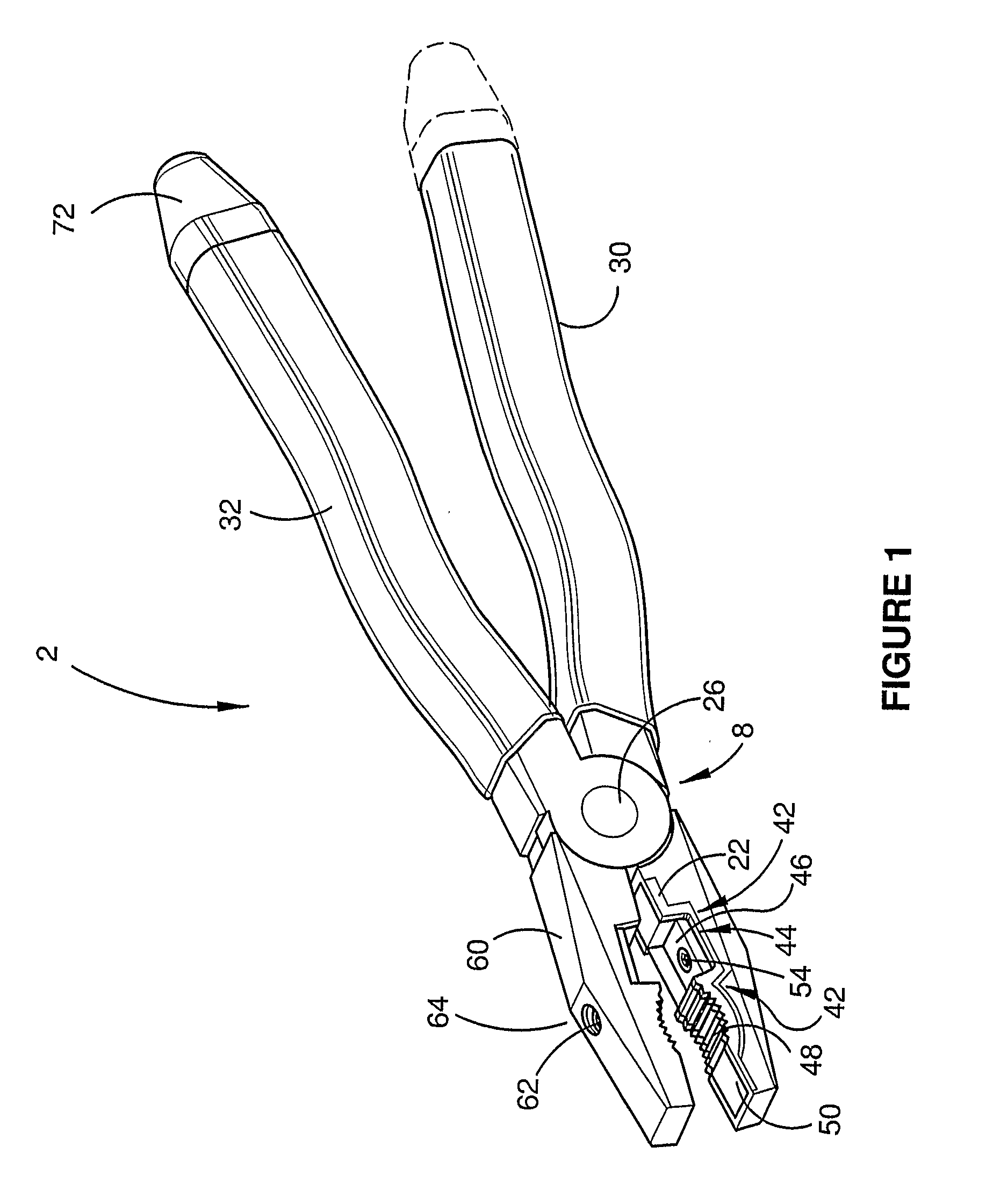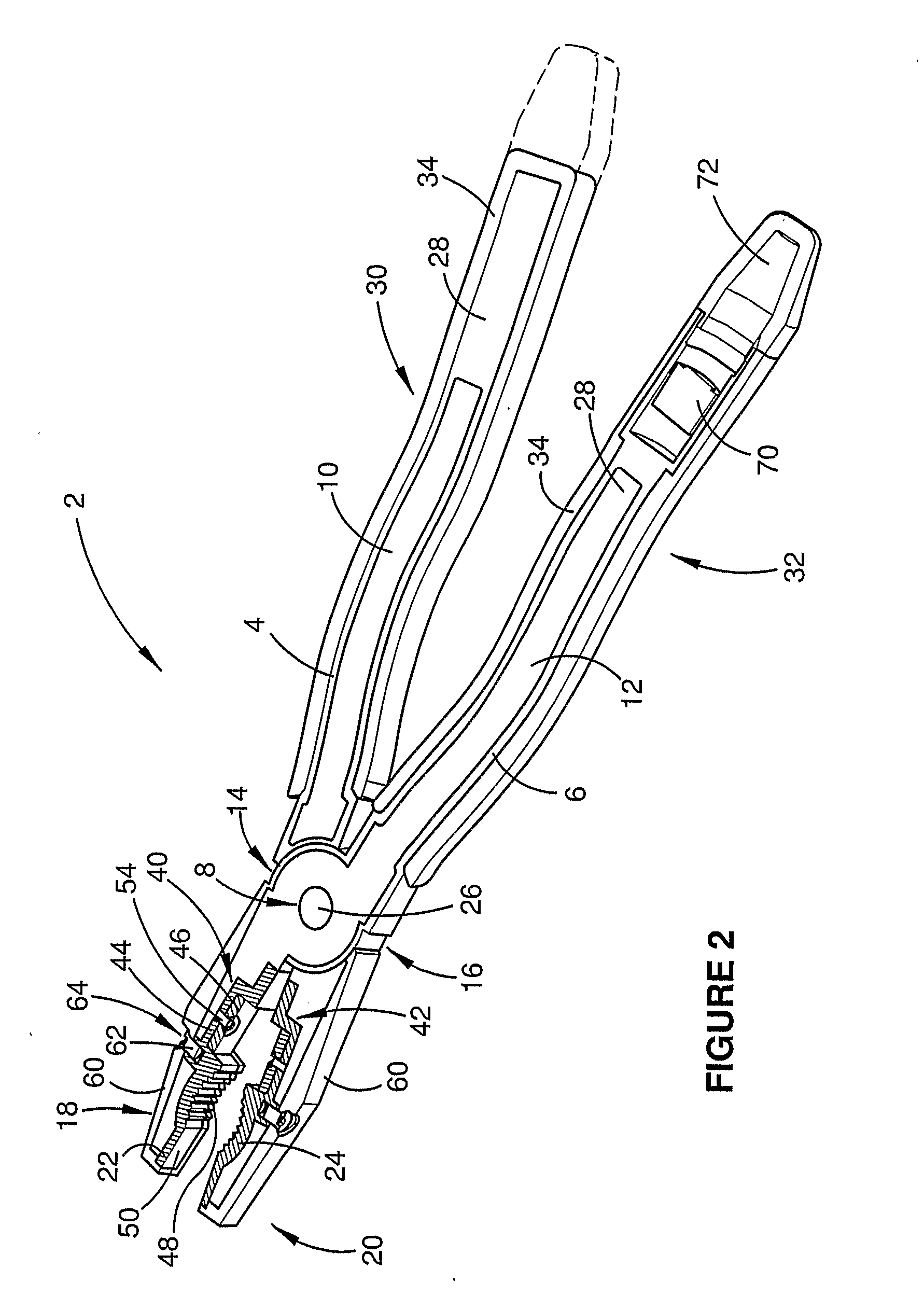Insulating Hand Tool
a technology of hand tools and insulating materials, applied in the direction of multi-purpose tools, metal working devices, pliers, etc., can solve the problems of not being able to remove power from the conductor, not always being able to disconnect power, and the consequences of removing power are even more catastrophi
- Summary
- Abstract
- Description
- Claims
- Application Information
AI Technical Summary
Benefits of technology
Problems solved by technology
Method used
Image
Examples
Embodiment Construction
[0048]In one form, an embodiment of the gripping tool of the present invention is pliers, particularly insulated pliers, such as a lineman's pliers or similar generally denoted as 2 in the drawings. The pliers 2 comprise a framework arrangement comprising a pair of substantially elongate members in the form of limbs or arms 4,6 made from metal which are each pivotally joined one another at a pivot or fulcrum 8 allowing relative pivotal movement of the two arms 4, 6 with respect to each other. Each arm 4, 6 has a tang or similar end or tail portion 10, 12 located at or towards one end of pliers 2, a central section 14 , 16 forming part of the fulcrum or pivot 8, each central section being provided with an aperture in alignment with each other, and a work end 18, 20 respectively forming the head or nose of the pliers for receiving one form of a respective insert 22, 24 to hold and maintain the insert 22, 24 in place as will be described in more detail later in this specification. Thus...
PUM
 Login to View More
Login to View More Abstract
Description
Claims
Application Information
 Login to View More
Login to View More - R&D
- Intellectual Property
- Life Sciences
- Materials
- Tech Scout
- Unparalleled Data Quality
- Higher Quality Content
- 60% Fewer Hallucinations
Browse by: Latest US Patents, China's latest patents, Technical Efficacy Thesaurus, Application Domain, Technology Topic, Popular Technical Reports.
© 2025 PatSnap. All rights reserved.Legal|Privacy policy|Modern Slavery Act Transparency Statement|Sitemap|About US| Contact US: help@patsnap.com



